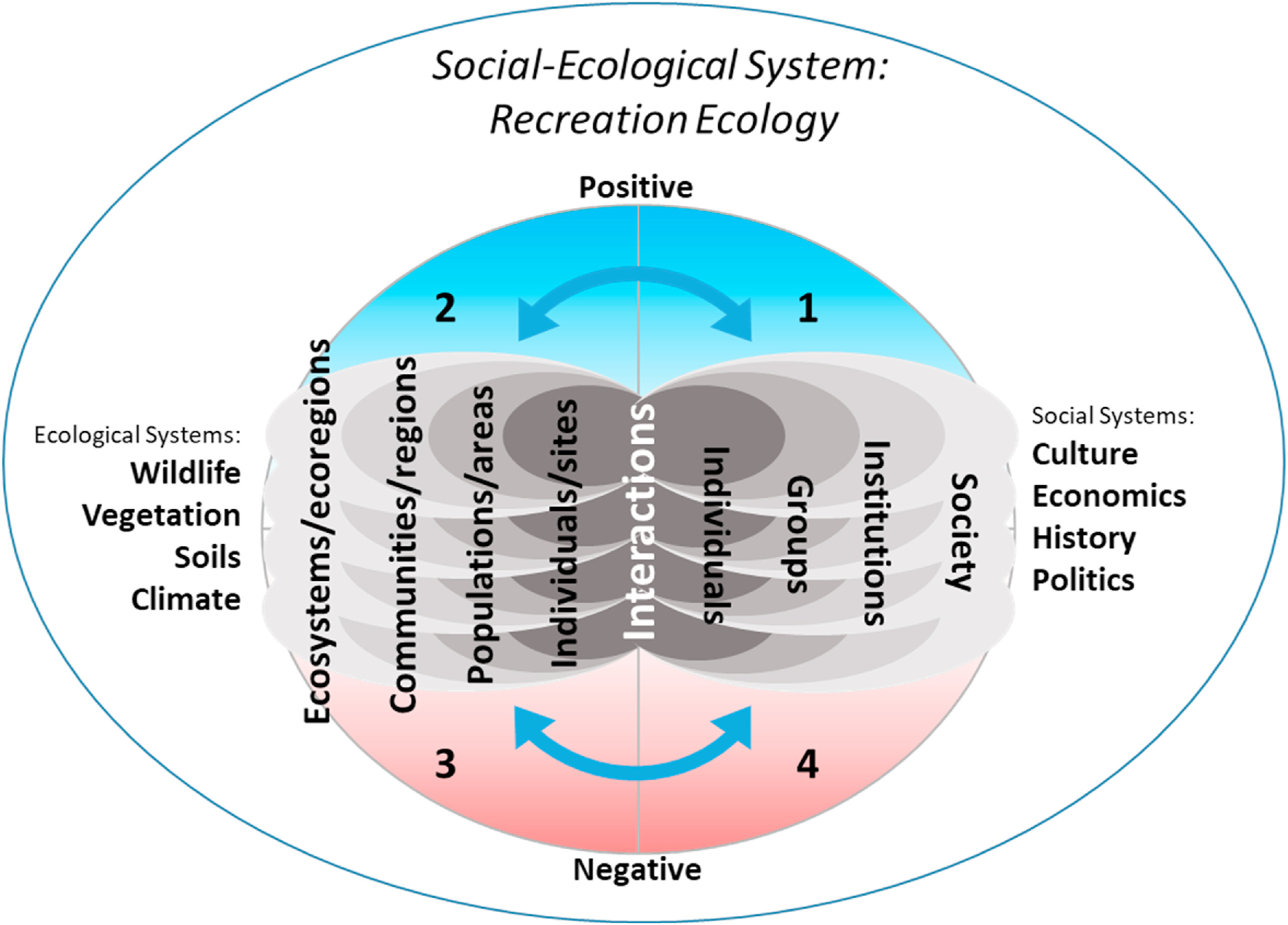
The social-ecological systems framework for recreation ecology.
From recreation ecology to a recreation ecosystem: A framework accounting for social-ecological systems
A complete understanding of a recreation ecosystem and the ability to solve current outdoor recreation problems involves understanding how the two primary components interact: (1) the recreationist and (2) the natural environment in which they recreate. The literature around recreation ecology however, has limited examples examining these naturally occurring two-way interactions. The majority of past studies focus on a single dimension, often the negative impacts caused by humans on the ecosystem. New research from the Institute of Outdoor Recreation and Tourism published in the Journal of Outdoor Recreation and Tourism explains why a recreation-ecosystem perspective is necessary to resolve current issues in recreation management and presents a new social-ecological systems framework to support this objective. The framework provides a two-dimensional, four-quadrant space to represent positive, negative, and neutral interactions between the social and ecological systems. What makes this framework so powerful is its adaptability. The framework can be applied to a wide range of social and ecological systems, considering interactions at the scale of individuals to an entire ecosystem or society, with interactions of varying intensities. In addition to helping identify research opportunities, this conceptual tool can be used by recreation managers to weigh tradeoffs with recreation-ecosystem management decisions.
In the paper, researchers apply the social-ecological systems framework to a recreation-wildlife system including an illustration to show the dynamics within the system. Positive interactions are reflected in the upper half of the framework where quadrant 1 represents positive effects of wildlife on recreationists, and conversely, quadrant 2 represents positive effects of recreationists on wildlife. The lower half of the framework shows the negative interactions. Quadrant 3 represents the negative effects of recreationists on wildlife, and quadrant 4 represents the negative effects of wildlife on recreationists. Recreation ecology has traditionally looked at recreation-ecological systems from the perspective of quadrant 3. However, interactions can be multi-directional, with feedbacks occurring at various scales. Humans can have positive effects on the environment through stewardship and supporting conservation goals, while simultaneously causing negative effects such as trampling. The researchers apply this framework to a case study on Mojave Desert tortoise conservation in southwestern Utah. In this case study, it was found that “building complexity such as feedbacks from multiple levels of both social and ecological systems into this collaboration supports its sustainability.”
Anna Miller, lead author states, “ecology is an inherently interdisciplinary field. Many natural resource management areas are transitioning to embrace ecology as a ‘science of synthesis.’ This interdisciplinary approach can help those fields overcome persistent problems. When using the social-ecological systems framework, researchers and managers can readily incorporate information from complementary fields." It also can be used to develop more integrative recreation planning and management tools.
A recreation-ecosystem perspective provides a more comprehensive picture for how social and ecological systems interact in an outdoor recreation and tourism context. This framework can help researchers and practitioners address long-standing issues such as how to minimize disturbance to wildlife while maintaining the necessary infrastructure on which recreation depends. The framework provides an approach to balance the needs of humans while simultaneously finding ways to protect the natural ecosystem.
Contact:
Anna B. Miller, Ph.D.
Assistant Director of Research and Operations
Institute of Outdoor Recreation and Tourism
S. J. & Jessie E. Quinney College of Natural Resources
anna.miller@usu.edu

